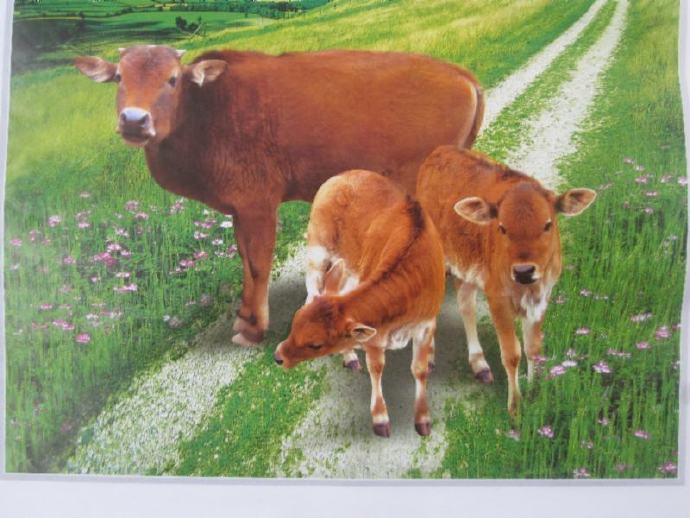

News briefing: Isolate and treat the sick cow promptly. During the high-incidence period of this disease, all newborn calves should be prevented with drugs. Antibiotics should be added to the newborn calves from the first breastfeeding for 3 days, which can significantl
Calf diarrhea is an intestinal infectious disease of newborn calves accompanied by a series of severe pathological reactions. The disease is common in calves from 2 days to 7 days of birth, with rapid onset, short course of disease, and high mortality. With the increase of age, the incidence is significantly reduced, and calves over 20 days of age are basically not susceptible to this disease.
Clinical symptoms
In the early stage of the disease, the sick cow only had porridge-like, yellow-white, smelly feces. As the course of the disease progresses, the body temperature can be as high as 40°C~42°C, the sick cow is depressed, lying happily, loses appetite or abolishes, the nose is dry, the pulse is 100~120 times per minute, and the breathing is 60~110 times per minute. , Breath sounds are coarse, purulent nasal fluid flows out of the nasal cavity of individual cattle, dry rales and dry cough appear on lung auscultation; discharge yellow-green jelly-like or water-like stool with blood clots, bloodshot eyes, and foul-smelling stool.
In the later stage of the disease, the sick cow's eyeballs sink, the skin lacks elasticity, and eventually die due to dehydration.
Causes
Calf diarrhea is divided into dyspeptic and infectious diarrhea. The pathogens of infectious diarrhea are Escherichia coli, Salmonella paratyphi of calves, coccidia and calf viral diarrhea (rotavirus and coronavirus infection).
Prevention method
Strengthen the feeding and management of newborn calves and pay attention to environmental and dietary hygiene.
Feed colostrum within one hour of the calf's birth, so that the calf can obtain maternal antibodies in time and improve its own disease resistance.
The quality of breast milk must be ensured to avoid contamination, and the udders of lactating cows must be scrubbed clean.
The calf pens should be ventilated in summer, and violent winds should be avoided in winter, and the calf pens should be clean and sanitary and regularly disinfected.
treatment method
Isolate and treat the sick cow promptly. During the high-incidence period of this disease, all newborn calves should be prevented with drugs. Antibiotics should be added to the newborn calves from the first breastfeeding for 3 days, which can significantly reduce the incidence.
Clinical cases use gentamicin, norfloxacin, sulfadiazine, kanamycin sulfate and other drugs, and the treatment effect is good.
Rehydration should be timely. Oral liquid can be taken when dehydration is mild. The formula is 20 grams of glucose, 3.5 grams of sodium chloride, 1.5 grams of potassium chloride, 2.5 grams of sodium bicarbonate, and 1000 ml of water. The amount of rehydration depends on the degree of dehydration of the body. Between 1000 ml and 1500 ml. Infusion is required when dehydration is severe. The prescription is (one time intravenous injection): 500ml glucose saline, 300ml~500ml compound sodium chloride solution, 200ml~300ml 5% sodium bicarbonate solution, 10% sodium bicarbonate solution 5 .0 ml, once for mild cases, 2 to 3 times for severe cases.